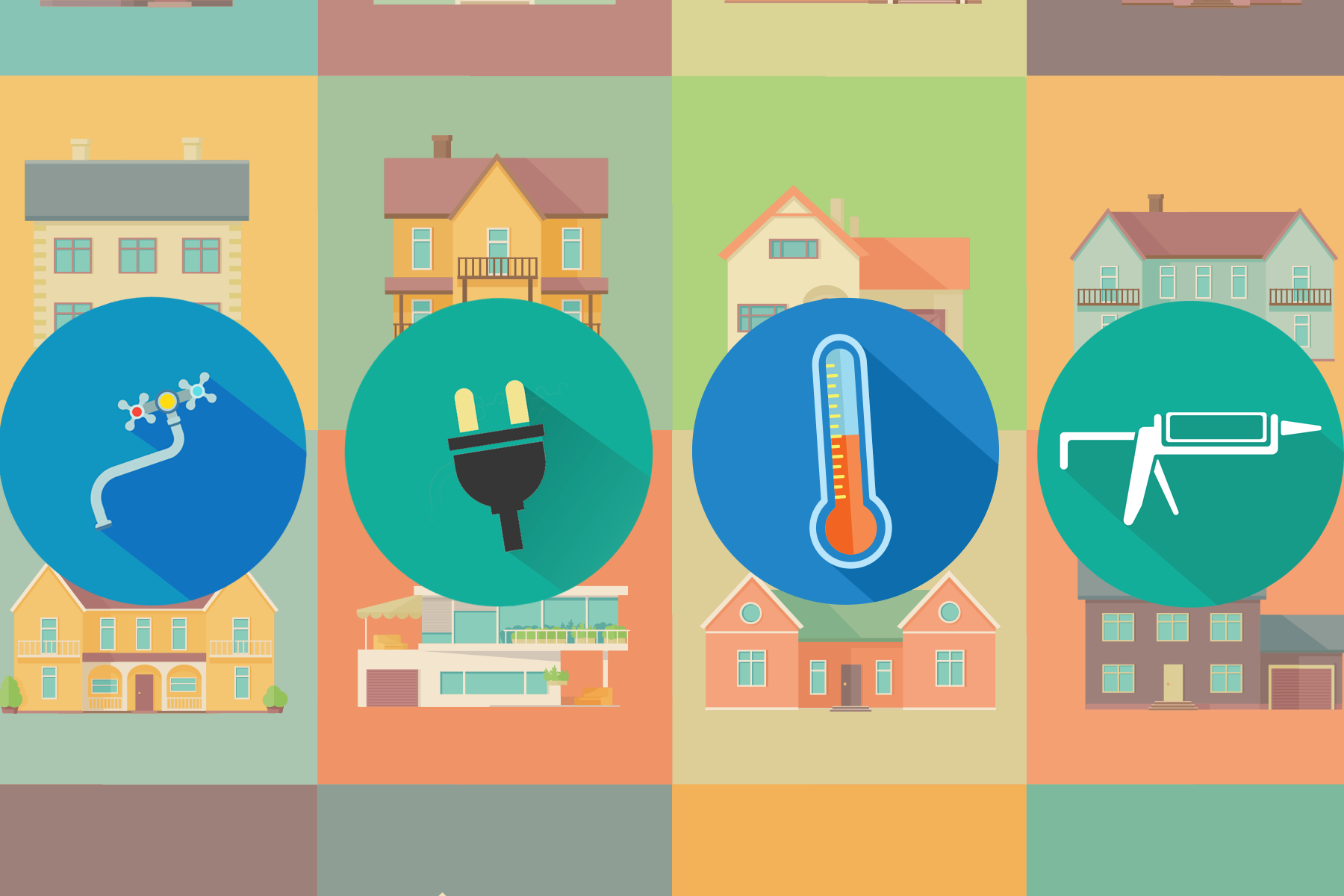
Getting the keys to a home of your own is an amazing feeling! But before you get too busy picking paint colors and arranging the furniture, you’ll need some skills under your belt in case of emergencies.
We asked the experts (namely, homeowners), and they told us these 10 skills are essential.
1. Turn off the gas
Gas leaks are dangerous, and they can happen in an instant. If you smell a leak, you’ll need to turn off the gas valves to any appliances in the area. These valves are usually located on the fuel line entering the appliance.
If the gas smell doesn’t dissipate, you may need to turn off the main valve. It is usually outside, on the first fitting coming from the meter. Carefully turn the valve in either direction until it is crosswise with the pipe.
When it’s time to turn the pipe back on, DO NOT do it yourself. Instead, you’ll need to call the gas company to do it for you.
2. Turn off the water main
Before you hit the hay on your first night in the new place, it’s vital to know how to turn the water supply off and back on. No one has time for a flood!
Most often, these valves are located near where the water comes into the house from the street. If yours has a wheel handle, turn it all the way to the right to turn the water off. Turn it all the way to the left to turn it back on. If it’s a lever handle, slowly turn the lever handle a quarter turn.
3. Adjust the water temperature
Next up, you’ll need to know how to adjust the temperature on your water heater. No one likes a cold shower, but you don’t want to get burned either! For most standard water heaters, the thermostat is located behind an insulated access panel.
For most families, a max temp of 120 degrees is sufficient, but you should experiment to find a temperature setting that meets your needs.
4. Fix a clogged toilet
Indoor plumbing is a modern marvel, but toilet clogs are bound to happen now and then. The best way to fix a clog is to use a plunger with an extension flange on the end. These flanges are designed to fit the inside of your toilet better and make your work easier.
First, plunge the toilet with the flange pulled out. The first pump will be all air, so go slow. Then, when the plunger is filled with water, start pumping up and down vigorously. Make sure there’s enough water in the bowl to cover the plunger, as forcing air down the drain won’t cause enough pressure to loosen the clog.
If all your plunging efforts fail, you might need to use a toilet snake or hire a plumber. But whatever you do, avoid adding chemicals to the situation. These can erode your pipes and work very slowly (if they work at all).
5. Change a showerhead
Before we move on from water, you’ll probably want to know how to change a showerhead. You’ll need a rag, an adjustable wrench, vise grips, and plumber’s tape.
First, try to unscrew the old shower head by hand. If it comes off, move on! If not, wrap the rag around the shower arm and secure the rag with the vise grips. Then, hold the vise grips tightly while using the wrench in the other hand to remove the old shower head.
Next, clean any rust or mineral deposits off the shower arm and wrap the threads with plumber’s tape, clockwise.
Finally, screw on the new shower head by hand and check for leaks. If there are leaks, use more plumbers tape and carefully tighten the shower head with the adjustable wrench until the leaks stop.
6. Replace the air filters
Having dirty filters in your furnace or air conditioner can drive up your energy costs and lead to poor indoor air quality. Experts recommend changing the filters at least every few months, and more often if you have pets or suffer from allergies.
To change the filter, locate the service panel on your heater or AC unit and remove it. Then, simply slide out the old filter and replace it with a new one. If you don’t know what size you need, simply check the frame of the old filter before you purchase a new one.
7. Find a wall stud
If you want to hang anything heavier than that poster of your favorite band, you’ll need to find wall studs. The easiest way is to use an electronic stud finder, available from most hardware stores for between $10 and $20.
Start at the height you want to hang something, about a foot to the left of where you think the stud may be. Then, place the stud finder flat against the wall and turn it on to calibrate. Next, run the tool across the wall slowly and wait for the light to turn from red to green.
When you've found the stud, mark the spot using a pencil before you start drilling any holes. Most walls have studs placed either 16 or 24 inches apart.
8. Clean the gutters
Roof damage, pest nests, and water damage can quickly dampen new homeowner happiness. To prevent all three, you'll need to clean out your gutters at least a few times a year (and more often if you have overhanging trees).
If you’re comfortable on a ladder, prop one against the house. Then, lie down a tarp to collect the debris on the ground. From there, scoop out the gutters with a specialized gutter cleaning tool or any plastic scoop. While you’re up there, check for (and repair) any sagging metal.
Pro tip: Ladders can be pretty dangerous. It's a good idea to recruit someone to help for this task.
9. Access the electric circuit panel (breaker box)
If you want to turn off electricity to a particular part of your house, or if the electricity suddenly stops working, you’ll need to access your breaker box. This circuit panel is usually located in a closet or utility room and covered with a metal door. Inside, you’ll find a series of switches.
If the electricity is out in a certain area and you see that one switch is flipped in a different direction from the others, try unplugging appliances in the problem area. Then, flip the switch back to its normal direction and try the lights. If the power is back on, it’s sign that you’ve overloaded that particular breaker.
In the best case scenario, each switch will be properly labeled with the room (or rooms) it controls. Often, however, this is not the case. When you figure out which switch controls a given area, we highly recommend labeling it properly.
10. Maintain appliances
If you’ve always been a renter, chances are good that you haven’t had to maintain your own appliances. Now that you’re a proud homeowner, things are a little different. You’ll need to clean filters on the dishwasher, remove lint from the dryer (and behind the lint trap), clean the oven, and clean the garbage disposal right away.
Ideally, the person who owned the home before you left a stack of appliance manuals behind. If not, you can find digital copies of most manuals online.
Ready for a home of your own?
If you're looking for a place of your own, your Castle & Cooke Mortgage loan officer can help you explore your options. Whether it's your first home, your next home, or your forever home, we're here to help.


